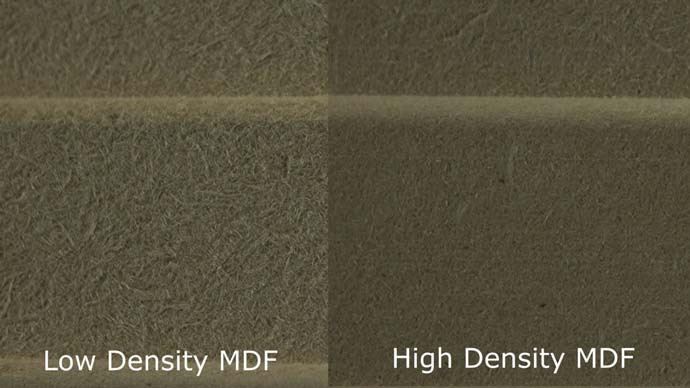
The Difference Between MDF
Posted by Lee Watkinson on 20th Jul 2018
What Is MDF?
MDF is a man-made board and it stands for 'Medium Density Fibreboard'. It is often found in products like furniture for your home. MDF is manufactured using wood fibres that are gathered from hardwoods and softwoods that have been broken down.
High temperatures and pressures are used along with waxes and resins to bind the wood fibres together and make the sheets of MDF that we use to create our skirting boards.
The Different Types?
Most MDF can be broken down into three categories: lightweight MDF, standard grade MDF & high density MDF. Standard grade MDF is made up of wood fibres with a synthetic resin adhesive to form the board. Lightweight MDF is the same as standard however, it is lighter and is slightly weaker than the standard grade MDF.
The high density MDF has much more wood fibres packed into it. It also features much better-quality wood fibres therefore helping the MDF retain a smooth, clean finish as opposed to standard grade MDF which can appear soft and brittle in comparison.
How Is MDF Made?
MDF is made up of wood fibres placed in a big container which is then crushed to make the board. To make higher quality MDF boards, more wood fibres will be added to the container which will make the same board but of a higher density. This creates a higher quality board with a much cleaner, smooth finish.
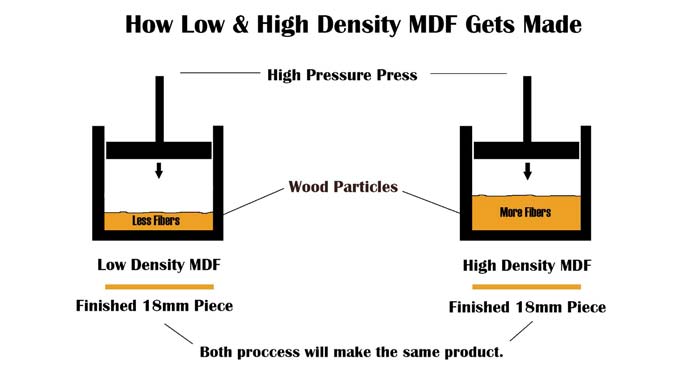
Once the MDF is formed, it is then sanded down to remove any rough spots and smooths the board down even further giving it a soft touch.
The Benefits Of A High Density Board?
Here at Skirting World, all our MDF is manufactured to the highest quality using only softwood fibres within the board to maintain a high standard of finishing and smooth surfaces. High density MDF has more wood fibres packed into it, allowing the board to come out in much higher quality than standard grade MDF.
The benefits are huge. Not only will be high density board be better looking and smoother to touch, it’ll keep its look much longer and won’t decompose as quickly as most standard boards. When properly looked after, a high density MDF board will last a lifetime.
How Can You Spot The Difference Between Standard MDF & High Density MDF?
From a distance it can be very tricky to spot which MDF boards are standard grade or high-density ones. Using these pictures side by side, I’ll show you the differences between unprimed MDF & undercoated MDF boards. For our example here, we will be using the Stepped 3 MDF Skirting Board, which is a popular board in the UK.

As you can see here, we have two pieces of MDF which look identical to each other at first glance. However, if we take a closer look at the boards, you’ll see the finish is very different. The standard grade MDF is much softer and brittle in the finish. Whereas the high density board has a much smoother fine finish, has a more consistent look and it hasn’t furred up. This straight away shows why we only offer our MDF skirting boards and architrave in high density rather than standard MDF.
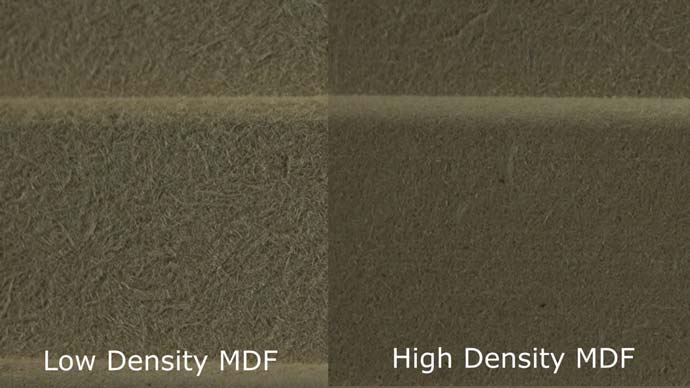
However, this example is the unprimed finish of the MDF boards. When we show this again with the undercoated versions of these boards, here’s the results:
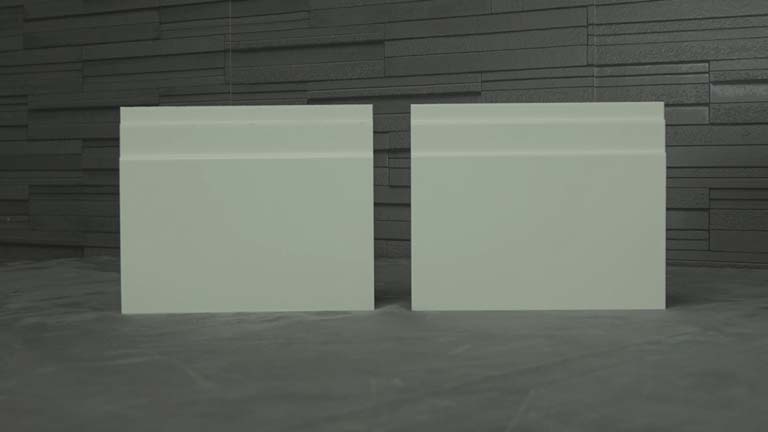
This time the differences are much more noticeable. As you can see here, the standard MDF has furred up. This term is an industry word which describes a board that is of poor quality and rough to touch. The pictures clearly confirm this as the finish on the board is all over the place and there’s a lot of sharp bulges and edges on the MDF.
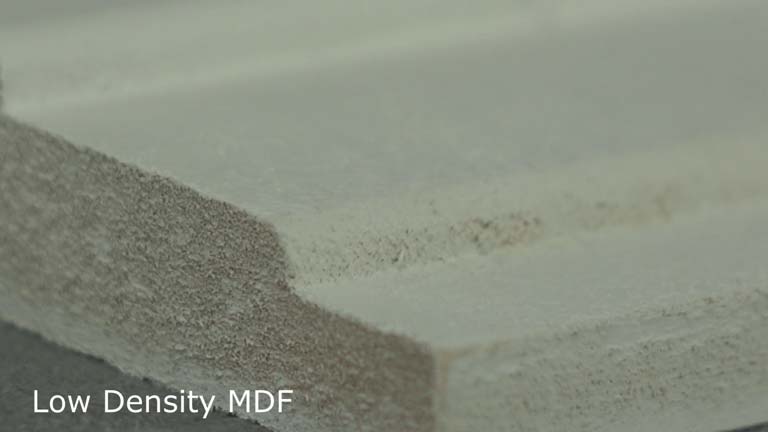
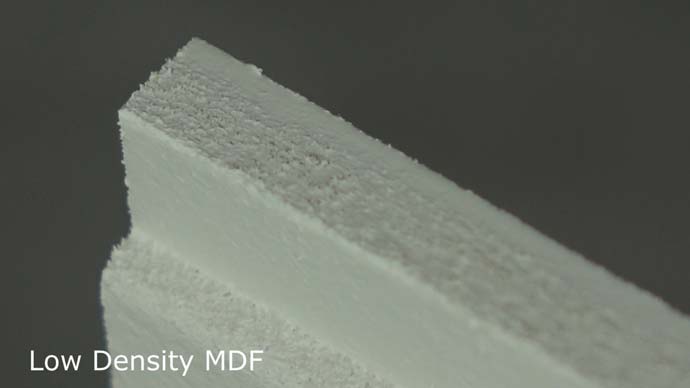
This board is potentially what customers may receive should you order standard grade MDF. For comparison, here is what the high density MDF board looks like:
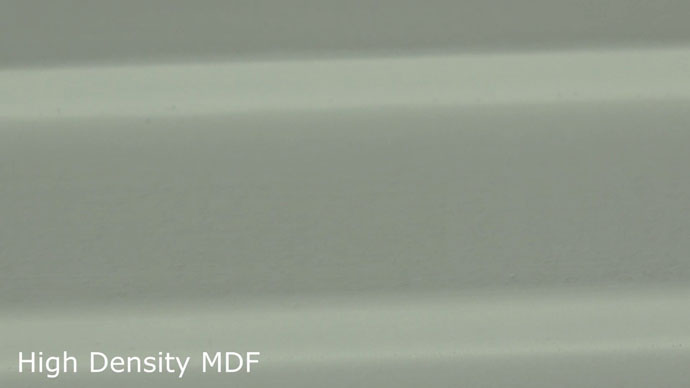
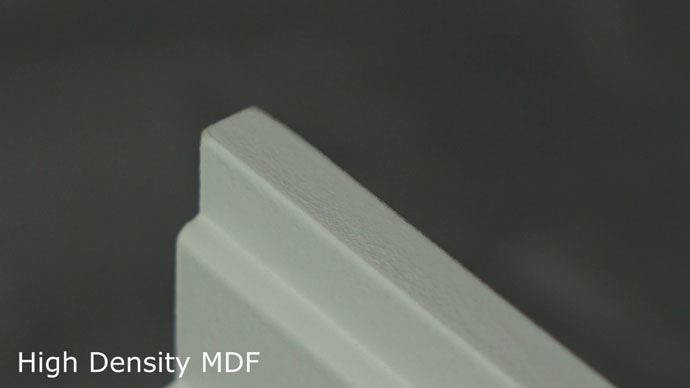
As you can see the lumps and rough spots from the standard grade MDF are simply not on this board. The MDF is smooth, well cut and has a clean finish too. High density MDF also allows for smoother cuts and is easier to machine.
Conclusion
The next time you think about buying skirting boards, make sure the quality of the board is up to the standard you wish to have. The last thing you want is to start having a hard time with the MDF board. Pick the right MDF board for you and do not be afraid to ask which MDF boards are standard and which are high density ones.
Now I ask you as a reader, what do you think about the different grades of a board?
Would you go with standard grade MDF after reading this blog post? Let us know in the comments below and thank you for reading!

Lee Watkinson
Digital Marketing Director at Skirting World with 10 years of experience in Home Interiors & Manufacturing.







